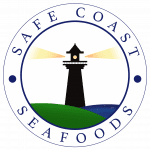One of the main factors influencing customers’ restaurant choices is freshness. In your restaurant, fresh seafood will always be a popular item. It takes some careful maintenance and preparation to ensure the seafood you serve is safe, so it’s a good idea to come up with some strategies for doing so. When handling and storing seafood, there are a few things to keep in mind for the protection of your customers and those working close by.
Carefully handle and package seafood
Seafood should be handled in a separate, clean area of your kitchen. Always wash your hands with warm water and soap for 20 to 30 seconds before and after handling seafood and wear food preparation. Similarly, use only freshly cleaned cutting boards and utensils, and thoroughly wash your utensils and cutting boards. The same rules apply to serving plates. Dishes containing raw seafood should never be followed by cooked seafood.
Handling, cutting, wrapping, and/or prepping of seafood should be performed as quickly as possible in order to minimize time outside of the safe temperature zone of 41°F and lower. Fish quickly starts to lose quality and deteriorate at higher temperatures.
Avoid cross-contamination
When seafood products are left open, there is risk of cross-contamination. Not only can seafood be contaminated, but its juices can also contaminate other foods. When wrapping seafood, make sure you use the proper materials and tools for secure storage.
To ensure the safety of your customers and to keep your cooler organized, all foods should be appropriately labeled with the name, date it was made, and use-by date.
A reliable distributor
Always purchase seafood from a reputable distributor whom you can rely on to deliver a well-maintained product. This indicates that the fresh seafood and shellfish you buy were kept at 41°F or lower throughout the whole supply chain. You must have faith that the distributor is on top of this before the product arrives at your door.
You can rely on us for seafood in San Francisco that is stored and transported properly. Safe Coast Seafoods strives to provide peace of mind to our suppliers, associates, and customers by providing transparent information, prompt follow-up, and sustainable seafood solutions.
Check For Odor
Rancid-smelling seafood is one of the most unpleasant things to serve to customers. No amount of garlic can mask the odor of spoiled fish. When shopping for fish at the market, a faint ocean scent is normal but seafood should not smell unpleasantly “fishy”. Fresh fish labeled “previously frozen” may have softer flesh and dull eyes, but it should still smell good. Peeled crustaceans, like lobster and shrimp, should be moist around the edges but not slimy or dry. The same is true for mollusks such as oysters and clams.
In The Kitchen
Never remove seafood from the fridge for longer than an hour, especially in busy commercial kitchens that are frequently hotter than the rest of the restaurant. Bacteria that cause illness multiply rapidly in warm temperatures. Use soap and hot water to clean countertops, bowls, and utensils frequently.
For reliable wholesale seafood in San Francisco, get in touch with us at Safe Coast Sea Foods.
